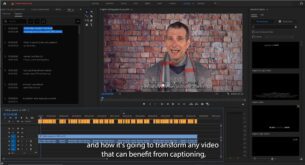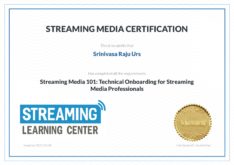I wrote a story on ad blocking for the Streaming Media Sourcebook, which did not include Instart Logic. They called to set up a briefing, and here’s what they told me.
Company: Instart Logic
Product: AppShield Ad Integrity
Date: March 28, 2017
Discussion with: Peter Blum, VP of Product, Dan Berkowitz, Head of Communications
Quick summary: AppShield Ad Integrity is an anti-ad blocker product that’s part of a suite of products offered by Instart. It’s been in production for about 12 months and is currently used by 20% of the Comscore 100. The service includes both cloud and player components, the latter comprised of JavaScript code that runs in a standard browser. The JavaScript client encrypts ad calls, so ad blockers can’t detect them, and then sends them to the cloud component, which decrypts, and passes along the request to the website, which delivers the ads and content to the player. The service can be used with or without Instart’s own CDN.
Product strengths appear to be breadth of ads covered, ease of integration, maturity, and cost. On the last, you pay a percentage of revenue recovered.
Company overview: Instart Logic is a cloud services company founded in 2010. It has raised $140M in investment to date, and is used by over 500+ enterprise websites. The primary focus is application delivery. The company has built a global CDN which it sells at commodity prices, with various premium performance and security operations built on top. The anti-ad blocking Ad Integrity product is part of AppShield.
 Figure 1. Instart products and services.
Figure 1. Instart products and services.
Ad Integrity overview: Architecturally, the system looks like Figure 2. On the left is the viewer’s browser with the Nanovisor, the product name for Instart’s JavaScript client. In the center is the Instart cloud service, while external websites are on the right.
 Figure 2. The Instart architecture.
Figure 2. The Instart architecture.
Because Instart has both a player and cloud component, the JavaScript client can encrypt ad calls and all other content requests sent to the cloud component, so ad blockers can’t detect the ad calls. The cloud component decrypts the requests, and sends them to the content and ad servers, which deliver the requested content and ads.
Here’s what the unencrypted calls look like in Chrome Developer Tools (blacked to hide client name).
 Figure 3. Unencrypted ad calls are easy to block.
Figure 3. Unencrypted ad calls are easy to block.
Here’s what they look like after encryption. Obviously, harder to detect and block.
 Figure 4. After encryption, they’re impossible to identify.
Figure 4. After encryption, they’re impossible to identify.
As part of its operation, the system can notify the regular ad decisioning system that the viewer was running an ad blocker. This allows Instart and the customer to track revenue recovered. In addition, Blum reported that virtually all clients using their system also eliminated interstitial and overlay ads to avoid, in essence, irritating this class of visitors. As a result, there was very little loss of engagement from visitors with foiled ad blockers as measured by metrics like time on site or length of articles viewed.
I asked Blum the top five questions prospects should ask before choosing an anti-ad blocking solution. His answers were as follows, with observations regarding the Instart solution.
- Who’s using it? With 20% of the Comscore 100, Instart has proven credibility.
- What type of advertisements does it protect? Because it encrypts the entire page, Instart preserves all advertisements, including display, video, native, sponsored content, and the like. Many other technologies only work with video-related advertisements?
- Does it force you to work with specific exchanges? Instart doesn’t.
- What’s the level of effort to actually implement? The Instart system involves adding some JavaScript to the player and routing traffic from the origin using DNS, same as if you were starting to use a CDN. So the initial development burden is minor, with minimal ongoing administration. Overall, you can use the same ad servers, the same video players, and the same ad exchanges, making the development burden, in Blum’s words, a “low lift.”
- What’s it cost? Instart gets paid a percentage of the ad revenue that they recover.
Note that I have not independently verified any of this information.
 Streaming Learning Center Where Streaming Professionals Learn to Excel
Streaming Learning Center Where Streaming Professionals Learn to Excel







